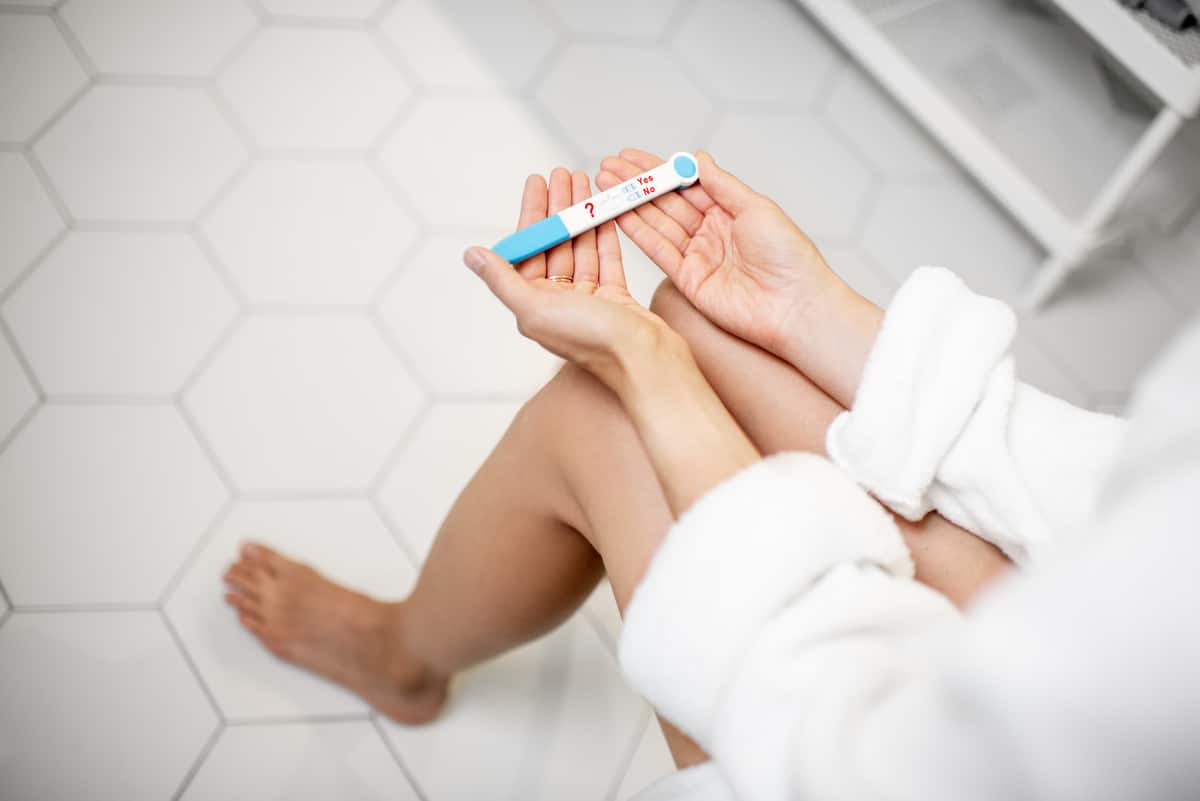Pregnancy is something many women are looking forward to experiencing. To have a tiny human growing inside you is a miracle and a magical experience. Many women, out of excitement, cannot wait until their next doctor’s visit to find out if they’re pregnant and resort to using a home pregnancy test kit.
A home pregnancy test kit is a pretty accurate way of checking if you’re pregnant; it’s 99% accurate if you follow all the necessary steps.
It measures the hCG or human chorionic gonadotropin in the urine. The hCG is a hormone that a pregnant woman produces, and it increases as you go further along with the pregnancy. In the United States, close to 8 million women used a pregnancy test kit in 2020.
Most errors in using the kit are not carefully following the directions. To give you an idea, here are the steps you should follow in taking the home pregnancy test kit:
- Wash your hands with soap and warm water before starting.
- Collect the needed materials—a clean collection cup, timer or a watch, and the kit.
- Make sure you lay everything on a flat surface.
- Collect your urine in the cup midstream for five seconds
- With a dropper, get enough urine samples and place three to five drops of urine on the kit window.
- Wait for the recommended time to lapse before reading the result. Typically, most home pregnancy test kits require at least 10 minutes to pass by before interpreting the result to get an accurate reading.
Although home pregnancy test kits are 99% proven accurate, many women get a false negative or false positive reading on their test kits, which could be due to timing and incorrect interpretation. If you’re planning to buy pregnancy test today, here are the things you need to remember to avoid getting a pregnancy test error:
In This Article
1. Assess Before You Test
Do not take the test as soon as you find out that you missed your period. This might result in an error. It would be best to take the test at least a few days after you missed your period or 21 days after you last had unprotected sex. This way, your body will be able to develop enough hCG to determine that you’re pregnant.
Also, if you were recently pregnant or just had an abortion, make sure you wait four to six weeks before you take a home pregnancy test. This is because your recent pregnancy may leave traces of hCG in your body, leading to a false-positive result.
Additionally, suppose your fertility workup included hCG injections. In that case, you may need to wait for at least two weeks after your last injection because traces of hCG may still be in your bloodstream, again, resulting in a false positive.
2. Check The Expiration Date
Pregnancy test kits do expire. Make sure you read the expiration date at the bottom of the box. Usually, it’s one to three years after it was manufactured. Yes, expired pregnancy tests can show accurate results, but it’s a risky choice to take. In the end, these tests are most likely to show false results.
3. Follow The Directions
Taking the pregnancy test is pretty simple. However, each manufacturer may have specific directions you need to follow. Depending on the type of kit, you may need to make some adjustments of your own.
Some kits require you to pee directly on the strip, some provide a dropper and container, while other tests may need the pointy end to be dipped into the urine. This varies depending on the test you’re using, so it would be best to read the instructions carefully before getting an accurate result.

4. Take The Test First Thing In The Morning
Ideally, you should take the test when your urine is concentrated, usually your first pee in the morning. This way, the hCG will be highly detectable. If you can’t do this early in the morning, another way is to take the test midday, but you have to ensure that you haven’t peed for about four hours.
In addition, resist the urge to drink too much liquid before taking the test, as this will dilute your urine and might give you a false negative result.
5. Use Enough Urine Sample
Not putting the right amount of urine or not exposing the dipstick longer could give you an error in the reading. If using a dropper, ideally, you should put at least six drops of urine on the test window. If the test kit is the dipstick type, make sure you dip the test end for at least five to ten seconds to get an accurate reading.
In relation to this, reading the result too early or too late can give you an inaccurate result. Make sure you waited an ample time for the urine to get absorbed by the test strip. Typically, you need to wait for at least 10 minutes.
Conclusion
Home pregnancy kits are reliable and accurate. It allows you to discover your pregnancy in a private setting. The margin of error is very slim, and following the proper instructions will ensure you get an accurate result at home.










![Home Renovation Guide [2025]](/app/uploads/2021/04/design-hacks-1-378x300.jpg)
